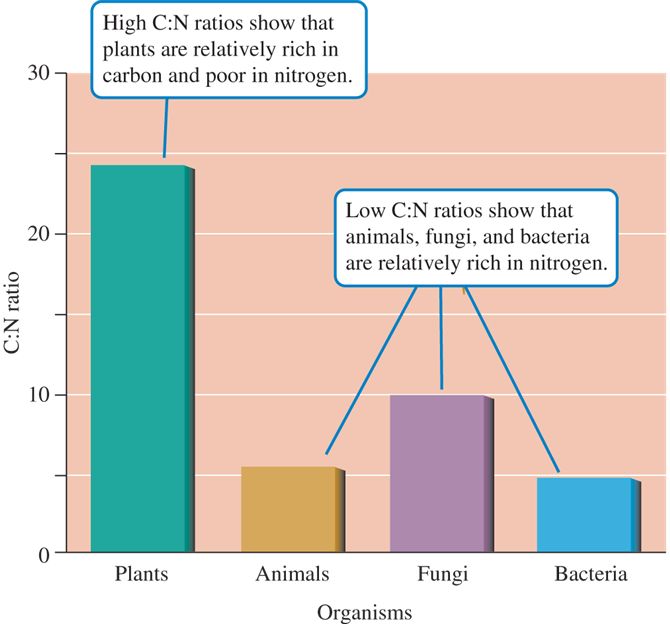Picture Gallery
On average, the ratio of carbon to nitrogen is much higher in terrestrial plants than in other major
 |
|
Previous Image | Next Image
|
Description: The chemical composition of nearly all organisms is quite similar, with just five elements (carbon [C], oxygen - , hydrogen [H], nitrogen [N], and phosphorus [P]) making up 93% to 97% of the biomass of plants, animals, fungi, and bacteria on the planet. Although the chemicals that build all organisms are very similar, the relative abundances of these chemicals are not. Of these four groups, plants are the most chemically distinct, containing low concentrations of phosphorus and nitrogen. The nitrogen content of plant tissues averages about 2%, while it is typically between 5%–10% in fungi, animals, and bacteria. Ecologists often express the relative nitrogen content of whole organisms or tissues as the ratio of carbon to nitrogen (C:N ratios). The C:N ratio of plants averages about 25:1, which is substantially higher than the C:N ratios of animals, fungi, and bacteria, which average approximately 5:1 to 10:1.
Picture Stats:
Views: 2092
Filesize: 46.21kB
Height: 624 Width: 670
Source: https://biology-forums.com/index.php?action=gallery;sa=view;id=1698
|

